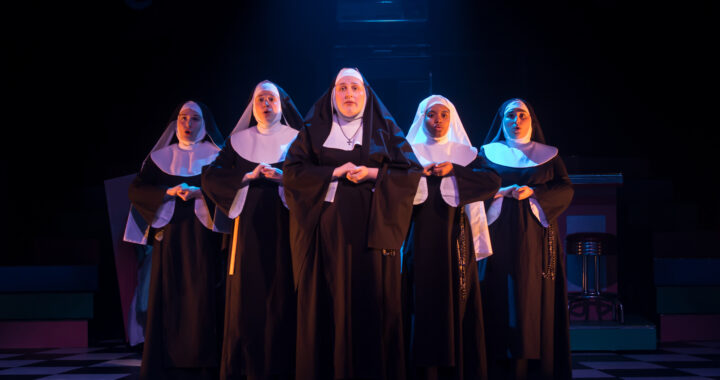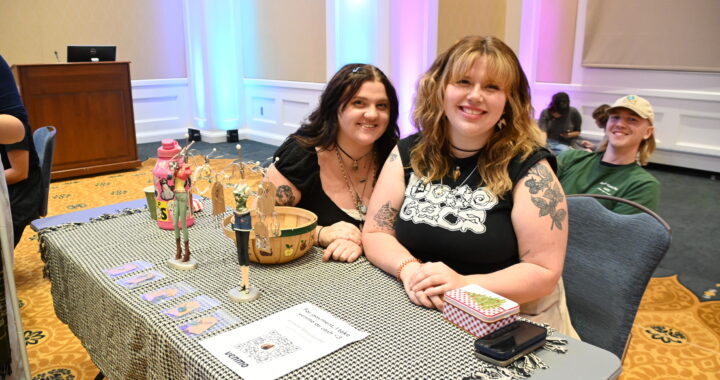“Steel Magnolias” prepares to debut as theatre students settle into roles
4 min read
UMW Theatre and Dance | Facebook
By LAUREN CLOSS
Interest mounts and attention turns to the stage as the house lights dim and the actors are lit up in colorful costumes against the set. The music fades into the background and disappears. The actors begin their performance and the audience is transported back to Louisiana in the 1980s.
Despite receiving minimal attention from the average audience member, technical theater elements such as lights, sound, set, props, costumes, hair and makeup are critical factors in the believability of a production. This is especially apparent in the upcoming production from Klein Theater, “Steel Magnolias,” set to open Feb. 17.
“I feel like a lot of people take for granted the things that they see in front of them but every nail file, every piece of siding, every poster on a wall was chosen for a very specific reason,” explained senior theater major and stage manager Taylor Kiechlin.
Another senior, lighting designer Erin Becker, agreed, “[The designers] pick out every single sound you hear, every light and color filter that you see. [They] pick out every paint color, texture, set piece, costume piece, wig, music and dance. Everything you see is very methodically thought-out no matter how small.”
In “Steel Magnolias” 139 students work endlessly as designers, run crew, stitchers, carpenters and electricians. Each of these students puts at least 45 hours helping with the show for either the theater practicum class or the laboratory portion of technical production classes.
Some majors like Becker also work on the production for their senior projects. Faculty members like director Kate Brewer hold only a few supervision and design roles and following opening night, leave the show in the hands of the stage manager.
As a whole, technical theater faces the challenge of shaping the world of the play in a subtle manner registered only by the audience’s subconscious. Each of the individual elements holds their own challenges as well, which vary with every play. Kiechlin identified the custom wigs constructed by alumna Madeline LeCuyer for the show and the small size of Klein Theatre as two of those challenges.
“Dealing with the wigs is so specific and so many things need to happen with them. It is a new aspect that I haven’t had to deal with before,” Kiechlin said. “Another challenge is our space because it is so tiny, which we love. It is a small intimate house, but it also doesn’t give you a lot of room onstage.”
The specificity of the script was also acknowledged by scenic designer and faculty member Niffer Pflager.
“They list about five or six magazines that they need to have, so we have to find specific magazines that they say in the script from the year that the script is taking place in. So we need to find a “Southern Comfort” from 1987,” Pflager said. “They say they want a Mr. Coffee, so now it has to be a Mr. Coffee and not some other brand of coffee maker.”
Other challenges exist for sound and lighting, both of which function to set the mood and shape the setting.
“With “Steel Magnolias,” there’s a radio on the stage and a lot of music going on in the scenes because it’s in a beauty shop,” said sound designer and junior Kevin DiCicco. “There’s a lot of problems finding something that fits the mood, especially because this show takes place in the 80s. Any time I look at a song I have to look at whether it was popular during the time and of course when it was released.”
The large number of hands working behind-the- scenes can be explained by the sheer amount of work required for the finished product. The student designers and stage manager have all had copious amounts of training, working up the ranks in previous shows, just as prospective student designers are doing now for “Steel Magnolias.”
Audiences are able to admire the product of technical theater, but without understanding the process often miss the intentionality of small details.
“Nothing in the theater happens on accident. It’s all very planned, and nobody really thinks of that because you just look at the whole, which is awesome. That’s what we’re aiming for. But it is also nice to take a step back and think of all the man hours and work that went into the show,” Kiechlin said. “Theater is a collaborative effort. You could have the best actors in the world, but if you don’t have a costume designer, they go onstage naked.”


